Огромная благодарность
Kathryn Kelly за Мастер-класс
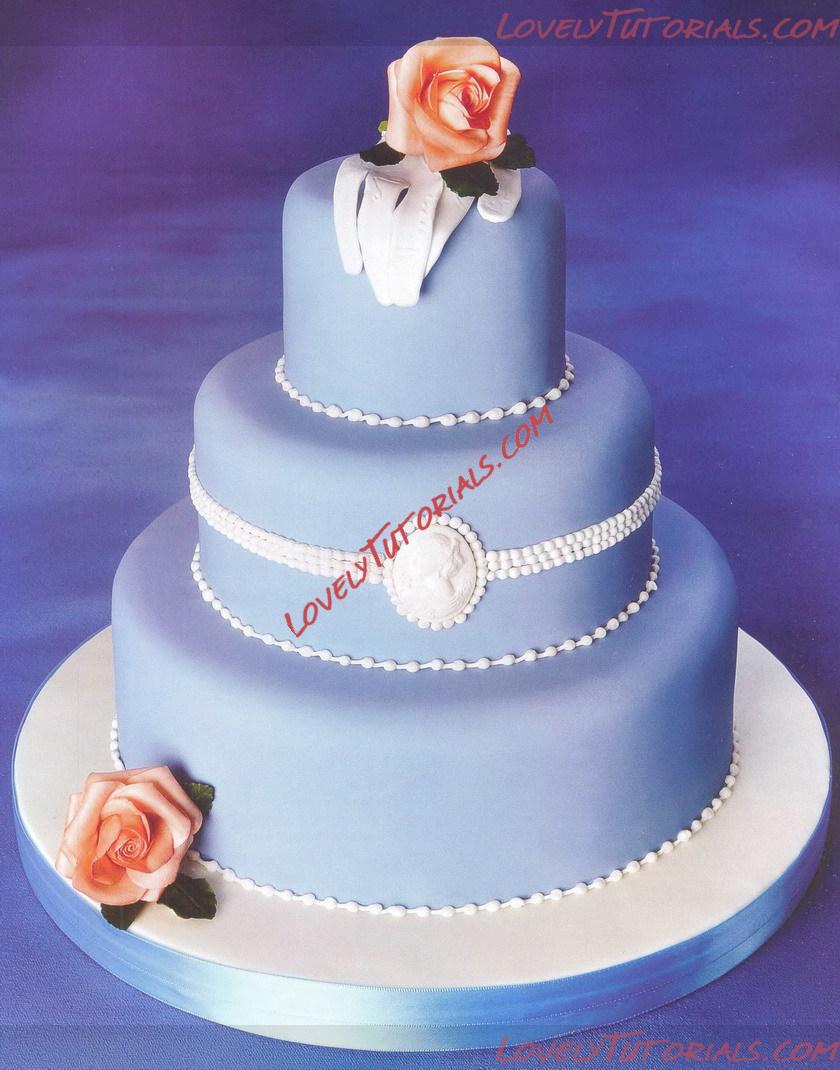
You will need
cake drum 2 round 35cm (14in)
marzipanned fruit cakes round on cake card
10, 17.5, 25cm (4, 7, 10in)
cake dowels 8
sugarpaste cream 3kg (6lb)
flower paste cream 100g (4oz), white100g (4oz)
dark green 25g (1oz)
royal icing cream
wires white 18, 26 gauge
paste colour wisteria (SK)
dusting colour damask rose (SK)
dusting colours ruscus, juniper (EdAble Art)
cameo mould (Aldaval)
bead maker (Hawthorne Hill)
rose petal cutters (TinkerTech)
large rose petal veiner (Great Impressions)
rose leaf cutters 276, 277, 278, 551 (TinkerTech)
rose leaf veiner (Great Impressions)
calyx cutter (FMM)
sugar glue
glue brush
palette knife
ball tool
foam pad
craft knife
baking paper
glove template
dowel cutter
dusting brushes
polystyrene dummy 10cm (4in)
rolling pin
spacers
embossing folder-stylized flowers (Cuttlebug)
piping nozzle No. 2
piping bag
green tape
small pieces of foam
blue ribbon 3m (3yds) 15mm wide
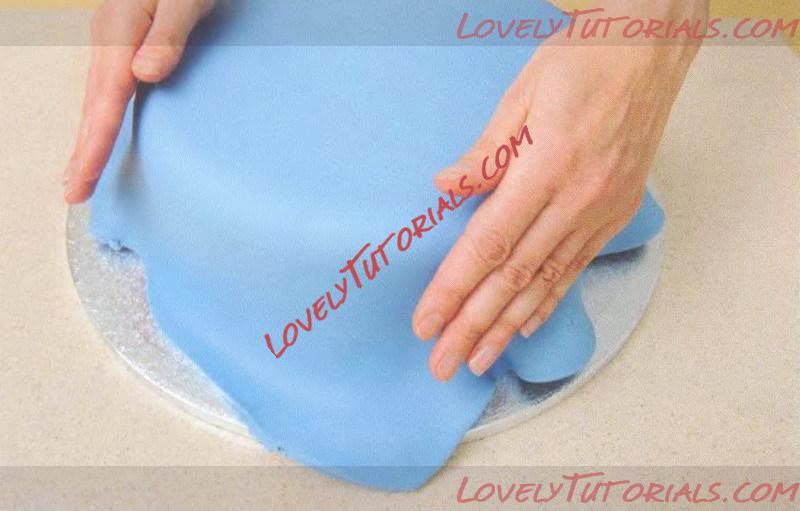
1 Colour 2.5kg of cream sugarpaste with wisteria paste colour, roll it out to a thickness of 8mm and cover the three marzipanned cakes. Roll out the remaining cream paste to a thickness of 4mm and cover the cake drum. Glue the other cake drum to the underside.
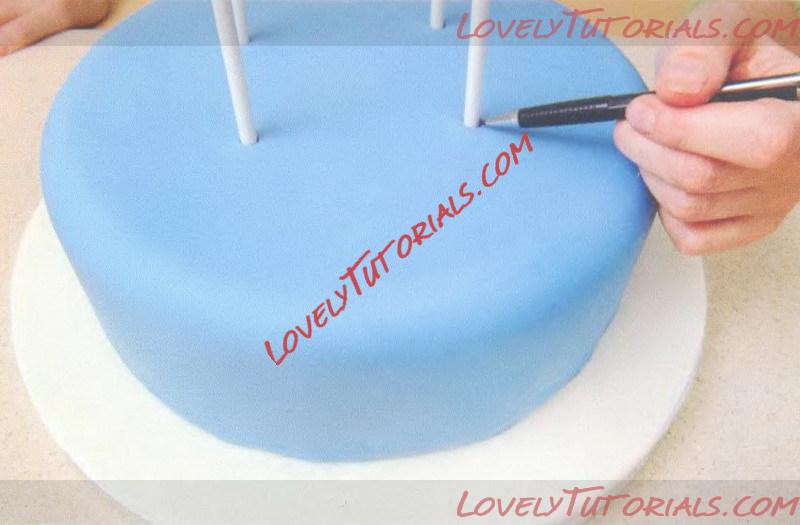
2Place the bottom tier on the iced board. Insert 4 dowels. Mark the height of each dowel, remove and cut them all to the greatest length. Wipe them with alcohol and push into the cake. Repeat with the middle tier. Stack the cakes and secure with a little royal icing.
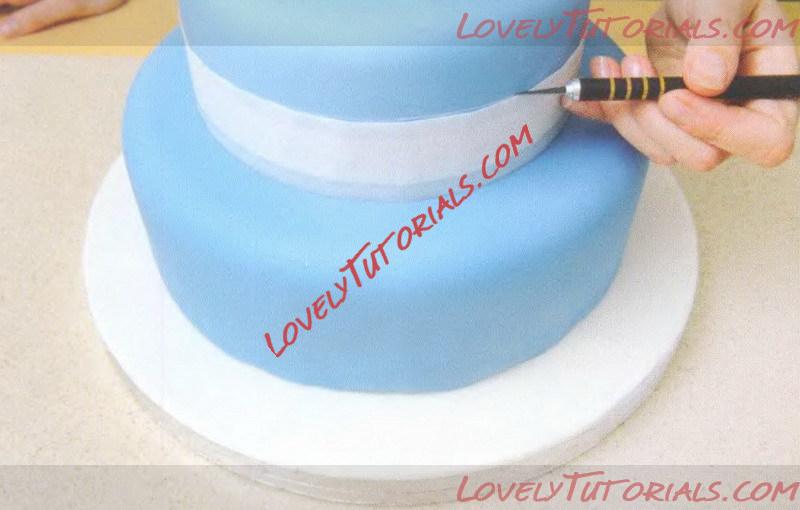
3 Cut a piece of paper 5cm (2in) high and long enough to go around the middle tier. Attach it to the cake with a piece of tape and use a craft knife or scribing tool to scribe around the whole cake. Remove the paper.
If the paste sticks to the mould, gently twist the longer sides in opposite directions until the paste is released.
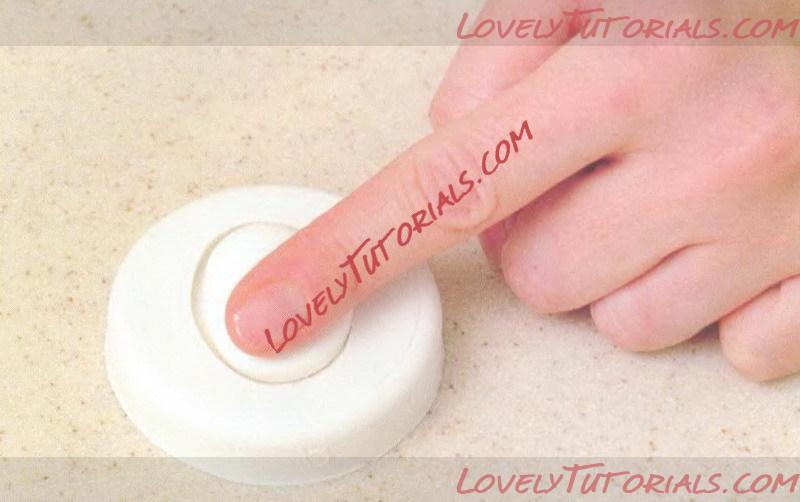
4Roll a ball of flower paste until it is smooth then press it firmly into the cameo mould, ensure all the detail is embossed. Leave to dry overnight in the mould, then invert to remove the paste.
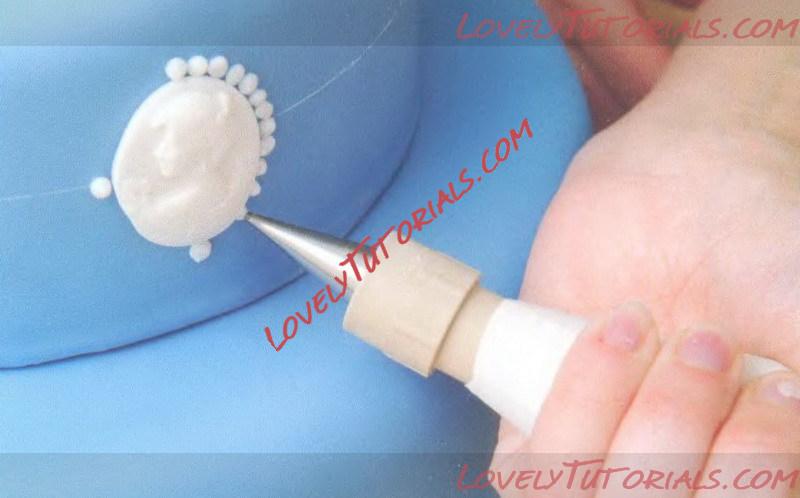
5 Use a small amount of royal icing to attach the dried cameo to the centre front of the middle tier, in line with the scribed line. With a No. 2 nozzle, pipe a series of 5mm (1/4in) dots around the edge of the cameo.
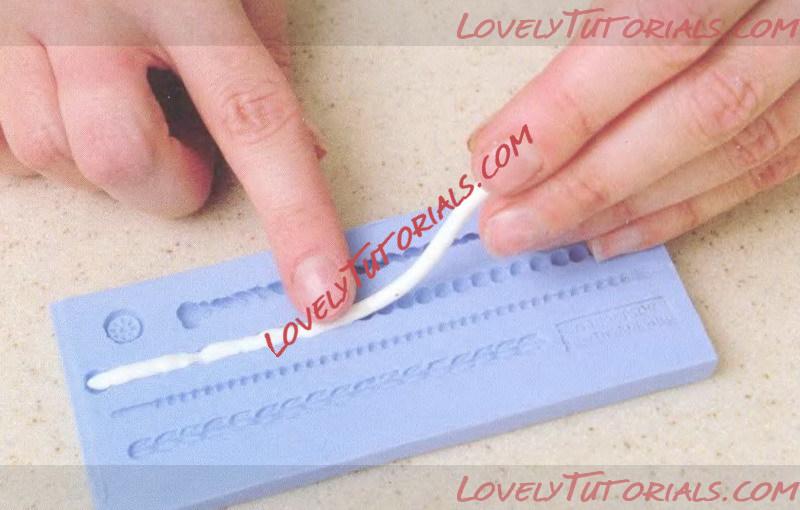
6 Roll a thin sausage of flower paste, approximately the same thickness as your bead mould. Start at one end and gently feed the sausage of paste into the mould, stretching and compressing to fill it completely whilst keeping the back flat.
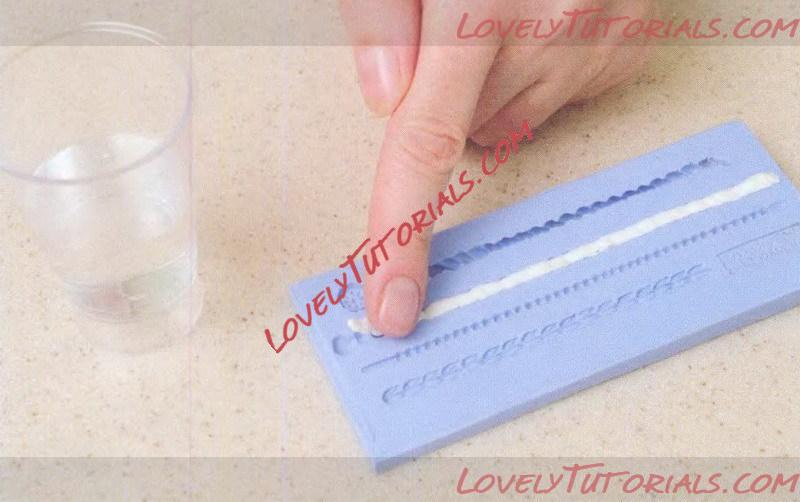
7With a damp finger, rapidly dab one end of the string of beads. As the paste becomes tacky, it will adhere to your fingertip, allowing you to remove the bead strip easily.
To equally space your dots, pipe the top and bottom, then 3 O'clock and 9 O'clock, using the scribed line as a reference.
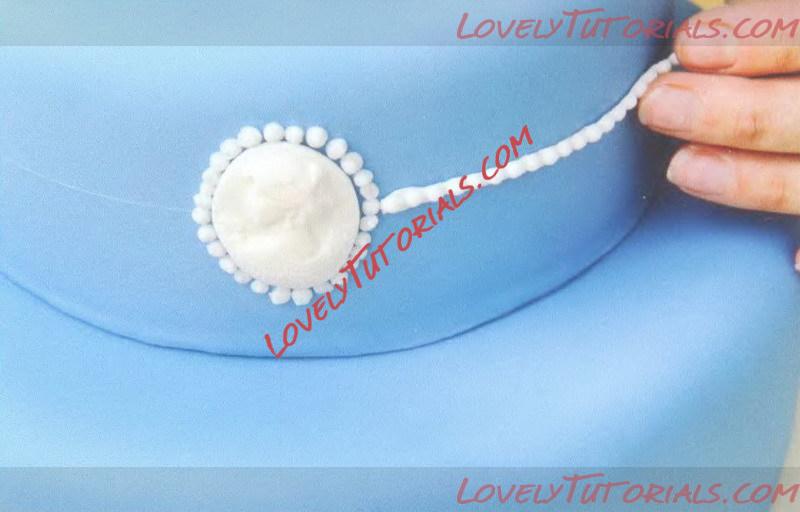
8Paint the scribed line with sugar glue. Place this first strip of beads on the scribed line next to the cameo. Repeat until the scribed line is fully covered.
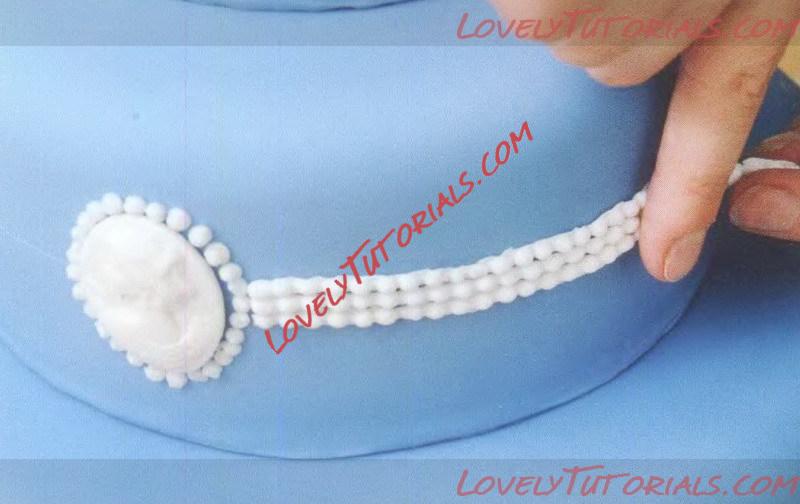
9 Repeat steps 7 and 8 and add a line of beads above and below. Use a No. 2 nozzle to pipe a snail trail around the base of each cake.

10 Insert a hooked 18g wire into a cone of flower paste and leave to dry. With the smallest cutter, cut 10 rose petals from white flower paste. Soften the edges with a ball tool and apply sugar glue down the right hand side. Take the first petal and wrap it around the cone, pull the right hand side tight.
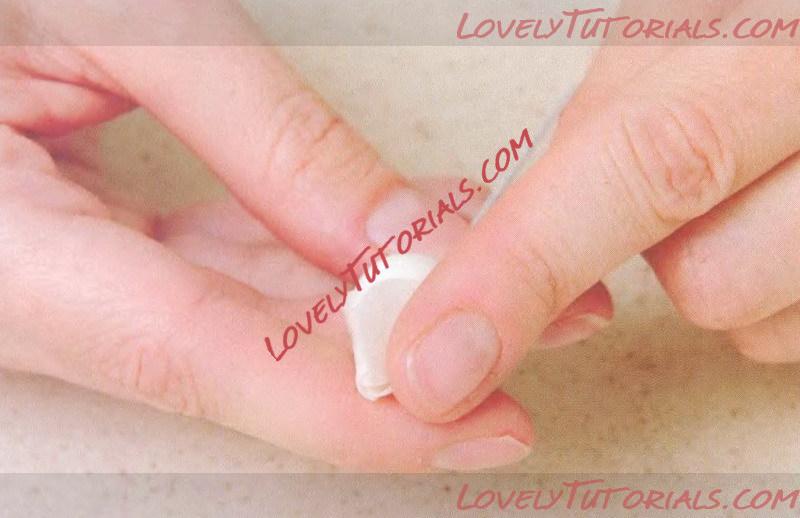
11 Place the second petal inside the open edge of the first and close the first tightly. Work anti-clockwise, place the third petal
over the edge of the first, and the fourth over the edge of the third.
Wrap petals two and three tightly around the cone.
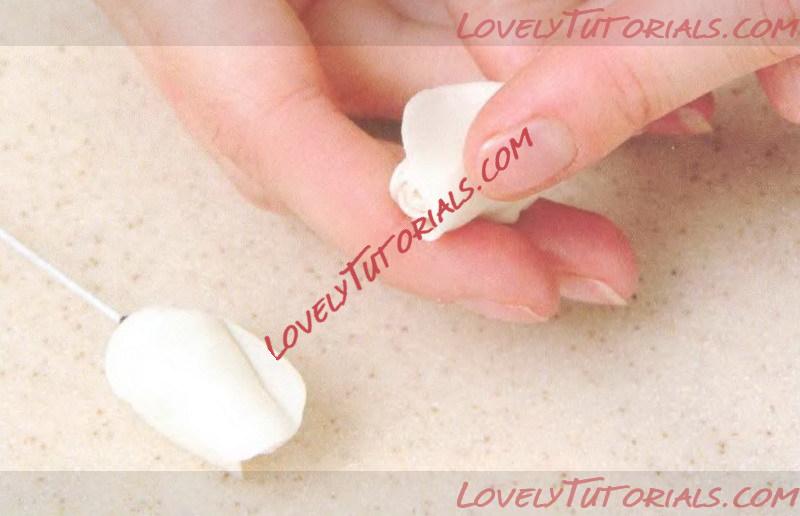
12 Repeat with petals five to seven and eight to ten, leaving petal ten open.
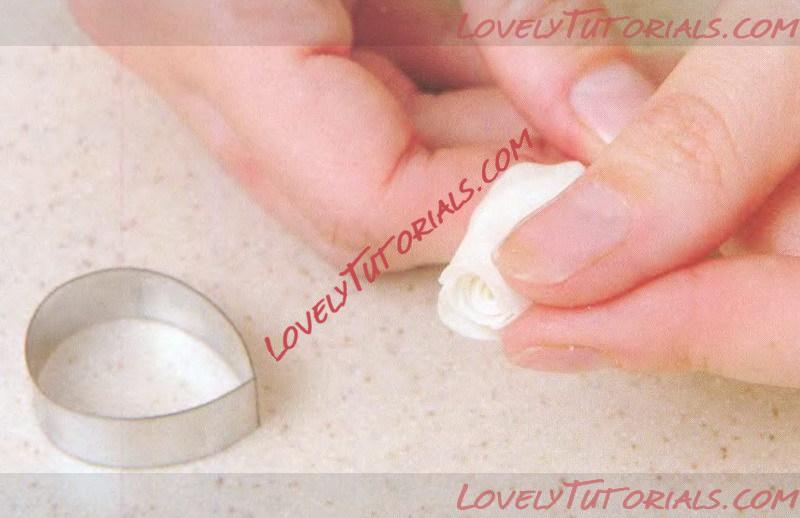
13 With the next size cutter, cut three petals. Soften the edges and ball the base of each petal. Arrange the three petals like
the previous layers but this time pinch the top edge of each petal and leave very slightly open.
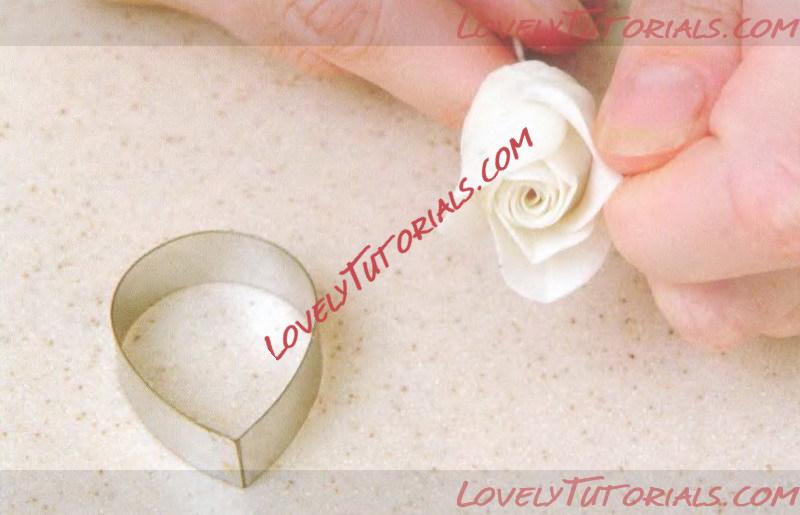
14 Cut three petals with the next size cutter, soften the edges and vein firmly with the rose petal veiner, pinch again and roll back the open edge with a cocktail stick.
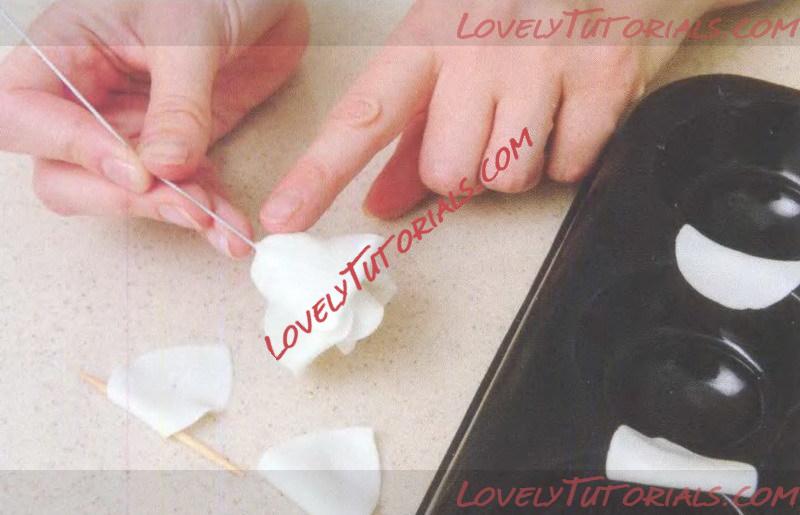
15 Cut out 8-10 petals with the largest size cutter, soften and shape as in step 14. Leave to firm up over an apple tray. Ball the base of each petal and apply sugar glue. Hold the rose upside down and stick on four petals, top, bottom, left and right.
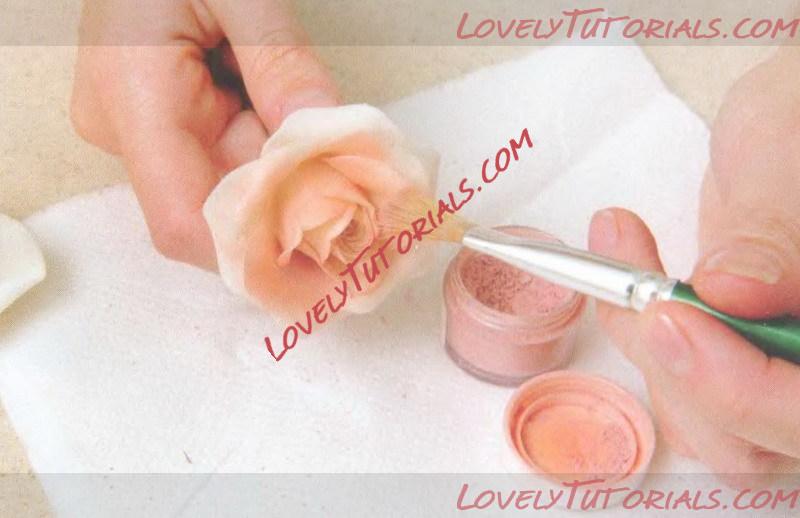
16 Turn the rose upright to check the position and adjust as needed. Turn upside down again and add more petals as needed, turn upright to check and adjust. Leave to firm up by hanging upside down, then dry thoroughly upright. Once dry, dust the roses with damask rose dusting powder.
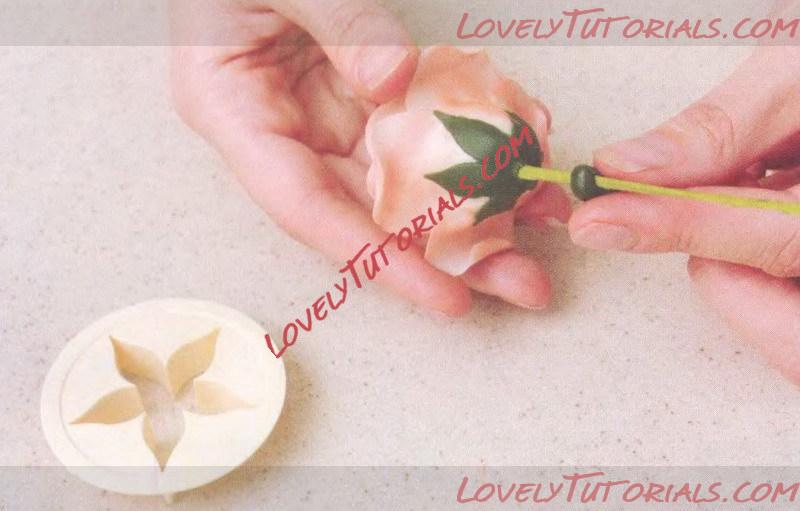
17 Strengthen the rose stems by taping in an additional 18g wire. Add a calyx and hip to each rose and once dry, dust with a mixture of ruscus and juniper dusts.
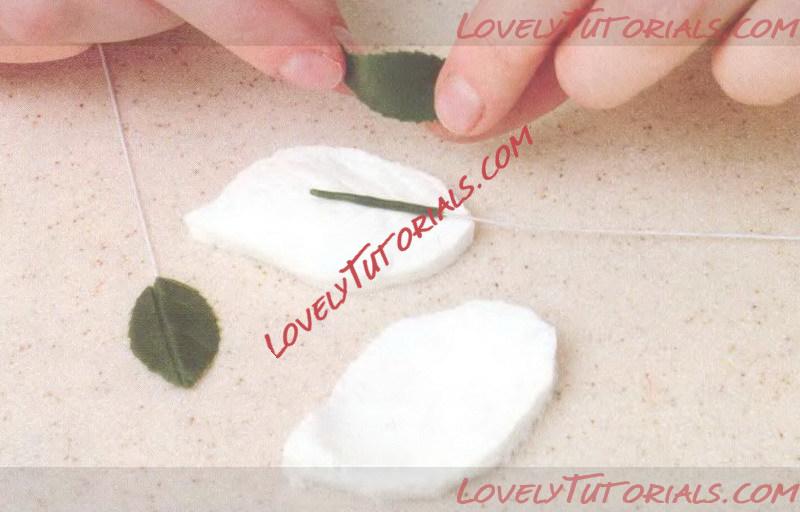
18 Cut and vein 6 rose leaves from dark green flower paste and insert 26g wires. Once dry, dust these also with a mixture of ruscus and juniper dusts.
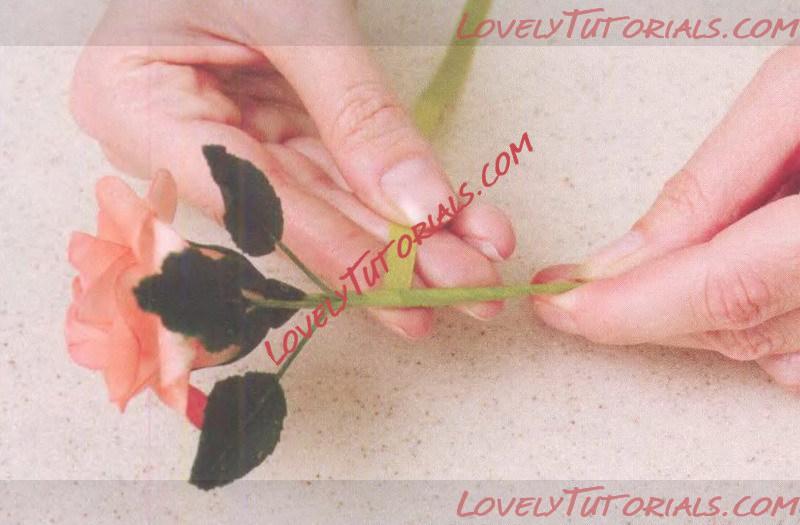
19 Tape the stems of the leaves and then tape the leaves together in groups of three. Tape the leaves to the rose.
Steam the two completed flowers and leave to dry.
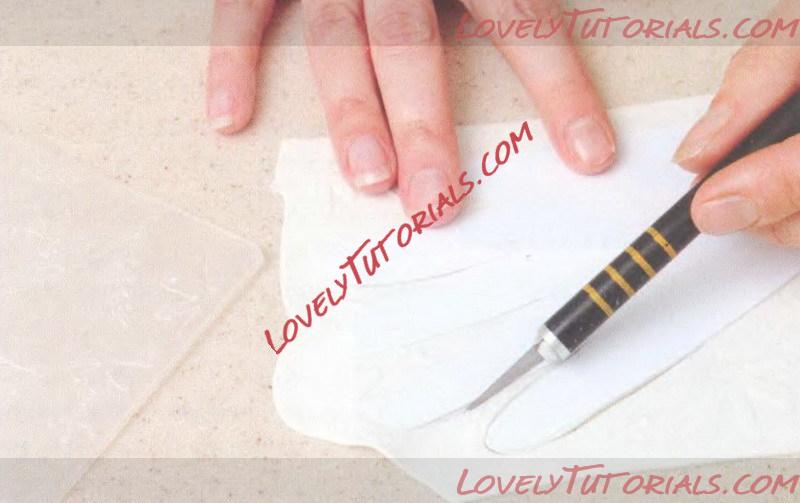
20 Roll out cream flower paste as thinly as possible. Emboss by placing it in the embossing folder and rolling over this firmly. Cut out the glove shape.
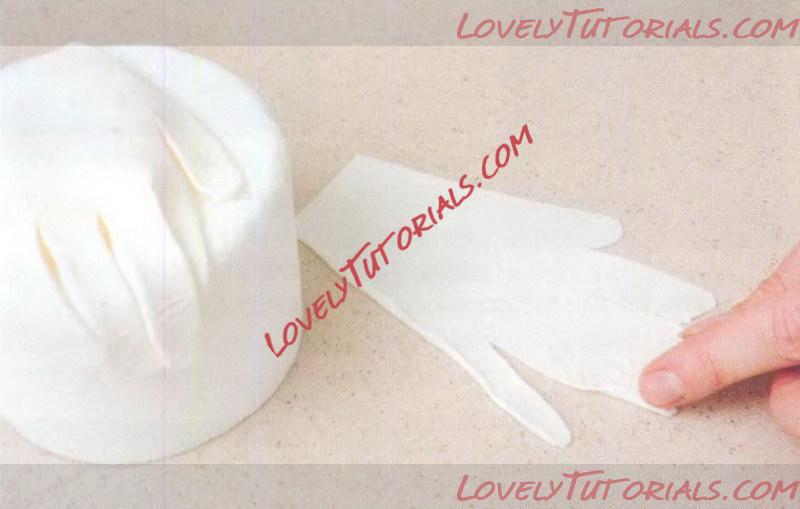
21 Turn the glove over and with a fingertip, roll over the very edge of the flower paste. Drape it over a 10cm (4in) dummy and support various parts with small pieces of foam to give the glove some movement. Leave to dry.
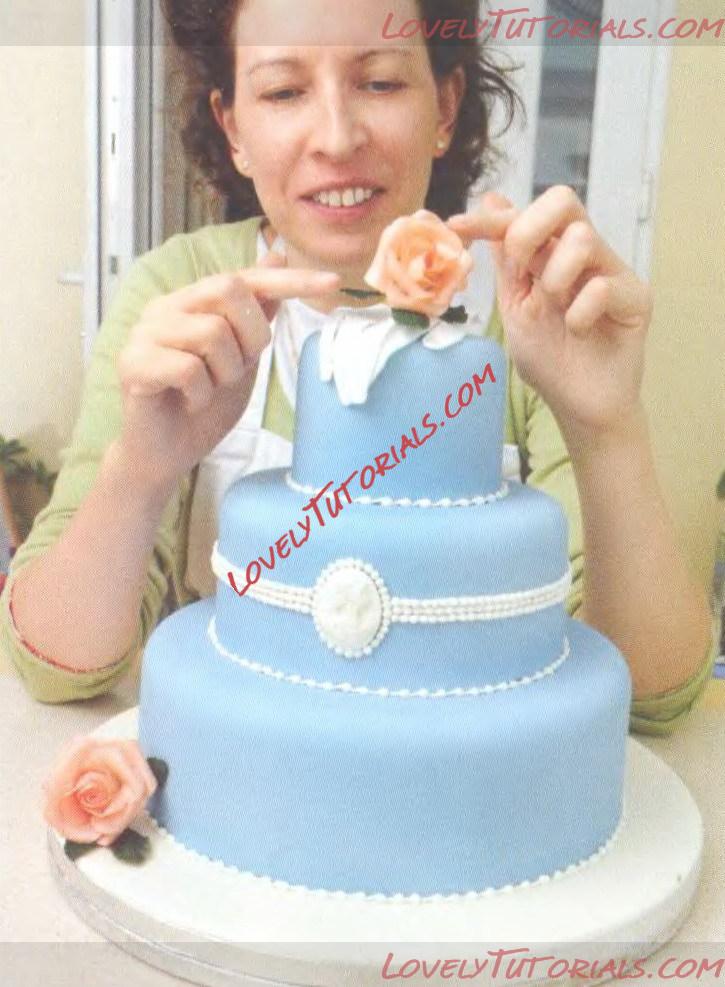
22 Place the dry glove over the top tier, support sections with small amounts of sugarpaste and secure in place with sugar glue. Trim the stems of the two roses. Place one at the left hand side of the base drum and the second on the top of the cake; secure each with a small amount of sugarpaste. Finish with a length of blue ribbon.


МК взят с журнала
Cake Craft & Decoration February 2012

